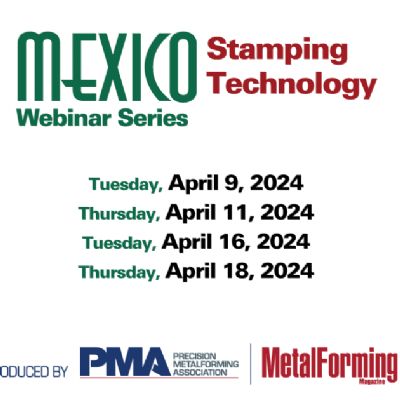 Jeff Debus
Jeff DebusGrowing Popularity of Linear Servo Press Technology
January 19, 2023Comments
1. What are the major benefits to linear servo presses?
Once reserved for lower-tonnage applications, modern linear servo presses now offer forces to 500 tons, making them ideal for nearly any application. Linear systems combine the best of press technologies—the flexibility of hydraulic presses with the rigidity and precision of servomechanical presses. Linear presses generate full tonnage throughout the stroke and are extremely precise, low maintenance, energy efficient, clean and quiet.
Data collection is built into the actuator, thus sensors and other monitoring technology is not required. The added rigidity improves die life and serviceability, while flexible programming infrastructure makes recipe setup and recall fast and easy.
2. How do these compare to hydraulic presses?
Linear servo presses have no hydraulic power units, which means no reservoirs, hoses, manifolds, fittings or pressurized oil. This eliminates potential leaks and part contamination while still offering the same forming flexibility.
The simplistic actuator design results in as much as an 80-percent reduction in the number of components compared to a hydraulic press, which means minimal spare parts, easy troubleshooting and millions of cycles without maintenance. Because linear systems only use energy on-demand, users yield to 70-percent energy-cost savings compared to hydraulic systems that require electricity even when the press is idle. Linear servo actuators also generate very little heat compared to hydraulic systems, and they aren’t adversely affected by temperature fluctuations or thermal cycling.
3. How do these compare to servomechanical presses?
Linear servo presses do not utilize complicated crankshaft or flywheel mechanical drive systems. This eliminates loss-of-energy concerns above bottom dead center by providing full tonnage anywhere in the stroke. This allows press users to only purchase the necessary tonnage sizes, even for deeper forming or draw work. Linear presses also do not require counterbalance systems, resulting in easy and simple die setup, which can be done by the press operator alone and also can extend die life even during off-center loading applications. While some mechanical press systems can offer higher stroke rates, their complexity and higher upfront costs may dilute the stroke-rate advantage.







 Webinar
Webinar
 Video
Video
 Event
Event